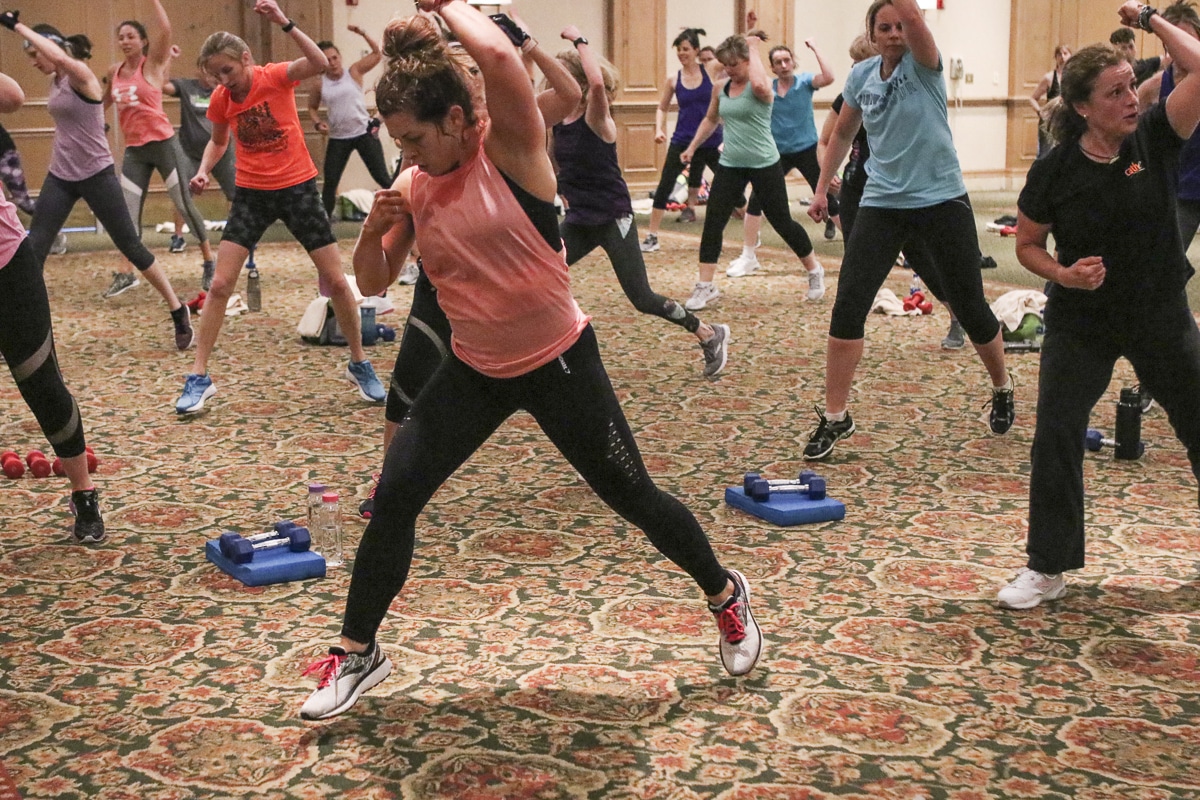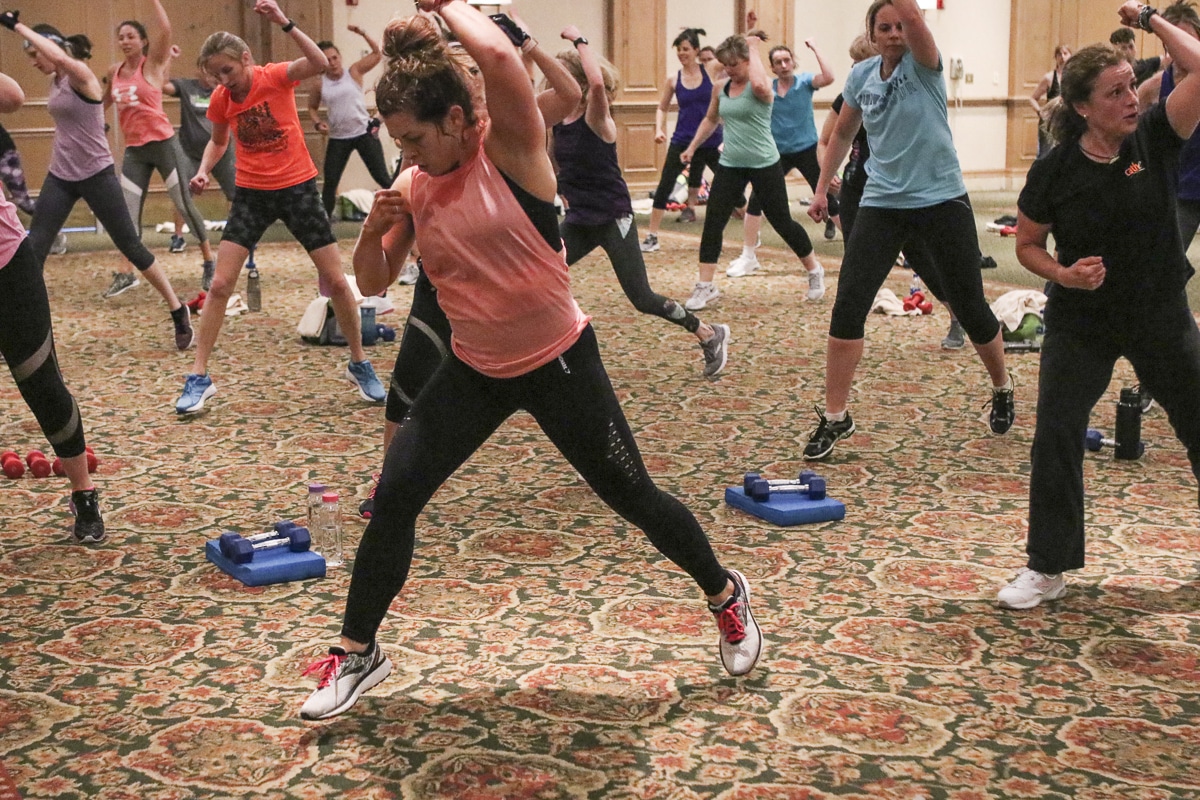Learn about brain health and nootropics to boost brain function
How a Single Workout May Immediately Lower Your Risk of Death


Aerobic exercise is a long-term investment in heart health, That’s one reason health care professionals urge their patients to exercise! Over time, your heart adapts to aerobic exercise and becomes a more efficient pump. As a result, your heart doesn’t have to work as hard to deliver blood to the body as it did when it was out of shape. In addition, exercise modestly lowers blood pressure and helps reduce inflammation, an underlying driver of cardiovascular disease. Exercise also positively impacts blood lipids.
Finally, aerobic exercise helps with weight control and improves body composition. For example, being physically active helps reduce the accumulation of visceral fat that men and women fall victim to during middle age. If your waistline is gradually growing, it’s because your visceral fat stores are expanding. Visceral fat is the riskiest kind of fat from a heart health perspective as it contributes to inflammation and insulin resistance. Regular workout sessions also improve blood sugar control and lower the risk of developing type 2 diabetes.
Changes happen at the cellular level too in response to exercise. Aerobic exercise makes tiny, energy-producing organelles called mitochondria more efficient. That’s why your exercise endurance improves over time and you develop more stamina. This is important because healthy mitochondria are linked with slower aging, according to some research.
Most of the benefits you get from aerobic training take time. It will be several weeks or months before adaptations, such as improved heart efficiency and changes in lipids, take place. But there are other changes that happen more quickly. Surprisingly, research suggests that we get benefits from aerobic exercise even after the first workout through a phenomenon called ischemic preconditioning.
Studies show that for up to three hours after a workout, your heart is more resistant to stress and your risk of dying from cardiac causes is lower. And 24 hours after a workout, more sustained cardioprotective effects stick around. So much for delayed gratification! You’re getting benefits after a single workout!
So powerful is the protective effect of a single bout of exercise that scientists propose that engaging in exercise before a cardiac procedure might offer enough preconditioning to lower mortality and speed up recovery after the procedure. At the very least, it’s good to know that after you’ve sweated through a workout, that your risk of dying from a heart-related cause is lower.
How Does Ischemic Preconditioning Work?
When you exercise at an intensity that leaves you huffing and puffing, it temporarily deprives your heart of oxygen. That might sound like a bad thing, but as long as you’re healthy, your heart can handle it short term. In response to oxygen deprivation, heart cells adapt in a way that makes them more resistant to injury.
Unfortunately, scientists don’t understand the exact mechanisms behind ischemic preconditioning yet; they just know that it occurs. One theory is that during the time oxygen is reduced, chemicals are released that impact how heart cells respond. Some possible candidates include bradykinin, acetylcholine, adenosine, angiotensin, or reactive oxygen species. There’s still much to learn about ischemic preconditioning.
What we do know is this. For up to three hours after an aerobic workout, the heart is protected against damage. This is the initial phase of ischemic preconditioning. As the initial protection starts to wane, the second phase of protection takes hold. This phase called the “second window of protection.’ This protective phase is weaker but lasts for up to 72 hours.
Based on the proposed mechanism of ischemic preconditioning, higher intensity exercise would likely have the most benefits. If you take a walk or a light jog, you won’t reduce blood supply to your heart enough to cause heart cells to adapt and become more damage resistant. Indeed, research shows that both intensity and duration are important for ischemic preconditioning. Based on the study, you can expect the most protection when you work out at an intensity of 75% of V02 max or greater for 60 minutes. However, shorter periods of exercise may offer a lesser degree of preconditioning.
Some research also suggests that older individuals and obese people may get less protective effects since their heart cells may not as easily make the necessary adaptations. However, most people should get some immediate protective effects from a bout of exercise of sufficient intensity and duration.
Immediate Brain Health Benefits Too?
As if the heart benefits aren’t enough, research also shows a single exercise session benefits the brain. Studies show that a single exercise session boosts levels of key brain chemicals, including epinephrine, norepinephrine, serotonin, and dopamine. We also know that aerobic exercise elevates endorphins, natural chemicals that have a pain-relieving, mood-lifting effect. No wonder we feel so good after a workout! Studies show that a single workout improves executive function, the ability to plan and execute tasks. So, it makes you more productive. That in addition to the enduring impact exercise has on brain function. Research shows that longer-term exercise reduces the age-related loss of brain volume in key areas of the brain involved in memory, particularly the hippocampus. Heart and brain health benefits – who could ask for more?
The Bottom Line
Keep exercising! Ischemic preconditioning is just the icing on the cake. Research shows that regular exercise is associated with a 31% lowering of mortality due to cardiac events and a 27% reduction in mortality from all causes. It doesn’t get much better than that, does it? Then, you get the other health benefits of a good workout, including the positive impact it has on your brain and your mood. Based on these findings, you can benefit most by boosting the intensity of some of your training sessions through activities like high-intensity interval training. Of course, not every session should be a HIIT workout. Your body needs time to recover longer from vigorous exercise.
References:
Vasc Health Risk Manag. 2007 Oct; 3(5): 629–637.
Medical News Today. “How a single bout of exercise instantly protects the heart”
Up-To-Date. “Myocardial ischemic conditioning: Pathogenesis”
Curr Cardiol Rev. 2014 Nov; 10(4): 336–348.
Sports Med. 2009;39:923–35.
Medical News Today. “How does the brain respond to a single bout of exercise?”
International Sports Sciences Association. “Mitochondrial Adaptations to Aerobic Training”
Related Articles By Cathe:
What Impact Does Resistance Training Have on Heart Health? American College of Cardiology Weighs In
Click here to view full article